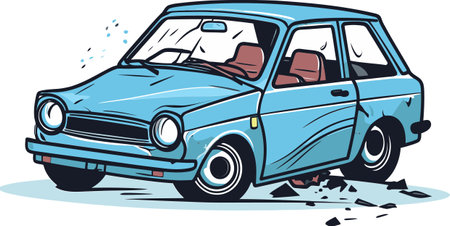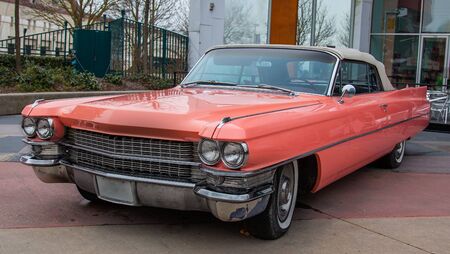1. Introduction: The Origins of Lowrider Culture
Lowriders have a deep cultural history rooted in the Chicano community, particularly in the southwestern United States. Emerging in the 1940s and 1950s, lowrider culture was more than just a way to modify cars—it became a powerful form of self-expression and cultural identity.
The Birth of Lowriders
After World War II, many Mexican American veterans returned home and began modifying their cars to reflect their unique style. Unlike the hot rod scene, which focused on speed and performance, lowriders emphasized a sleek, slow-cruising aesthetic that allowed the driver to showcase their vehicle’s details.
Connection to Chicano Culture
Lowriders became intertwined with the Chicano identity, reflecting pride in heritage and community. The artwork, paint jobs, and hydraulics used in lowrider customization often featured imagery inspired by Mexican history, Catholic symbolism, and family values.
Symbol of Identity and Pride
For many, lowriders were more than just cars; they served as a representation of cultural pride and resilience. Whether driven through the streets of Los Angeles, San Antonio, or Albuquerque, these custom rides served as rolling pieces of art and statements of identity.
Key Aspects of Early Lowrider Culture
| Aspect | Description |
|---|---|
| Slow and Low | Emphasized cruising low to the ground rather than racing. |
| Custom Paint Jobs | Bright colors, intricate details, and airbrushed murals with cultural themes. |
| Hydraulics | Allowed cars to be lifted or dropped with the flip of a switch. |
| Community & Clubs | Lowrider clubs formed tight-knit communities supporting the culture. |
The Evolution of Lowrider Culture
Over the decades, lowriders have evolved from a grassroots movement into a global phenomenon. What started as a localized expression of Chicano culture has spread worldwide, influencing fashion, music, and even mainstream car shows.
2. The Art of Customization: Building a Lowrider
Creating a lowrider is more than just modifying a car—it’s an art form that reflects personal style and cultural heritage. From custom hydraulic systems to eye-catching paint jobs and detailed chrome accents, every aspect of customization transforms an ordinary vehicle into a rolling masterpiece.
Hydraulic Systems: The Heart of a Lowrider
One of the most defining features of a lowrider is its ability to bounce, lower, and tilt with ease. This is made possible through a hydraulic system that replaces traditional suspension components with hydraulic pumps, cylinders, and switches.
Key Components of a Hydraulic System
| Component | Function |
|---|---|
| Hydraulic Pumps | Control the movement and height adjustment of the car |
| Cylinders | Installed on the suspension to raise and lower the vehicle |
| Hydraulic Fluid | Transfers pressure to activate the movement |
| Switches | Allow the driver to control the car’s movements |
By using different combinations of switches, drivers can lift the front, rear, or sides of the car, creating the signature moves that make lowriders stand out at car shows.
Elaborate Paint Jobs: Bringing the Car to Life
Another essential part of customizing a lowrider is the paint job. Whether it’s multi-layered metallics, candy paint, or intricate airbrush designs, the exterior of a lowrider serves as a canvas for creativity.
Popular Lowrider Paint Techniques
- Candy Paint: A deep, translucent finish that gives the car a rich and glossy look.
- Flake Paint: Metallic flakes are added to the paint for a sparkling effect under sunlight.
- Murals and Airbrushed Artwork: Custom designs, often depicting cultural icons, family heritage, or religious themes.
The goal is to make the car unique, ensuring it reflects the personality and identity of the owner.
Chrome Detailing: The Finishing Touch
No lowrider is complete without chrome accents that enhance its overall aesthetic. From bumpers to engine parts, chrome detailing gives the car an unmistakable shine.
Common Chrome Upgrades
- Wheels: Wire-spoke and deep-dish wheels are popular choices.
- Bumpers and Trim: Highly polished chrome adds a classic look.
- Engine Components: Chrome-plated parts make the engine bay as visually stunning as the exterior.
Chrome detailing, when combined with bold paint and hydraulics, completes the aesthetic of a true lowrider.

3. Car Shows and Community: A Gathering of Passion
Car shows play a crucial role in the lowrider community, bringing together enthusiasts from all walks of life to showcase their custom rides, exchange ideas, and celebrate the culture. These events serve as more than just exhibitions—they are vibrant gatherings where creativity, craftsmanship, and heritage come to life. Whether its a small local meet or a massive national event, car shows create an atmosphere of camaraderie and appreciation for the artistry behind lowriders.
A Platform for Expression
For many lowrider owners, car shows are an important opportunity to express their individuality. Every vehicle tells a story, whether it’s through an intricate paint job, unique hydraulic setup, or carefully selected interior details. Owners take great pride in their cars, spending countless hours perfecting each element before unveiling them to the public.
Key Elements of a Lowrider Car Show
| Element | Purpose |
|---|---|
| Showcase of Custom Rides | Allows owners to display their craftsmanship and unique designs |
| Hydraulic Competitions | Demonstrates technical skills and the performance of a cars suspension |
| Music and Performances | Creates a lively atmosphere and celebrates lowrider culture |
| Awards and Recognition | Encourages excellence and innovation among participants |
Building Connections and Sharing Knowledge
Beyond the competition and visual appeal, car shows foster connections among lowrider enthusiasts. These events encourage conversations about custom techniques, restoration tips, and the history of lowriding. Many seasoned builders mentor newcomers, ensuring that the culture continues to grow and evolve.
Workshops and Demonstrations
Some events include hands-on workshops and live demonstrations, where experts share insights into paintwork, interior design, and mechanical modifications. Attendees leave not only inspired but also equipped with new skills to improve their own rides.
A Celebration of Tradition
Lowrider culture is deeply rooted in tradition, and car shows pay homage to this history. Classic lowriders are displayed alongside modern innovations, showing the evolution of design and technology. More importantly, these events emphasize respect for the past while embracing new trends that push the boundaries of customization.
4. Lowriders in Popular Culture and Media
Lowriders have left a lasting impact on popular culture, influencing movies, music, and fashion. These custom rides symbolize individuality, creativity, and community pride, making them a staple in entertainment and global car culture.
Lowriders in Movies
Hollywood has embraced lowrider culture, showcasing these unique cars in films that highlight Chicano heritage, street culture, and automotive artistry. Movies like Up in Smoke (1978), Boulevard Nights (1979), and Blood In, Blood Out (1993) prominently feature lowriders, reinforcing their significance in urban communities. More recently, films like Training Day (2001) and Fast & Furious series continue to showcase these vehicles, introducing them to younger generations.
Lowriders in Music
The connection between lowriders and music is undeniable, especially in hip-hop, funk, and Chicano rap. Artists often reference lowriders in their lyrics and feature them in music videos, emphasizing their representation of cultural pride and expression. Some of the most iconic lowrider-influenced tracks include:
| Song | Artist | Year |
|---|---|---|
| “Low Rider” | War | 1975 |
| “Still D.R.E.” | Dr. Dre feat. Snoop Dogg | 1999 |
| “Ridin” | Chamillionaire | 2005 |
Lowriders and Fashion
Lowrider culture has also made a strong impact on fashion, influencing streetwear and urban styles. Brands such as Dickies, Ben Davis, and Pendleton have long been associated with the lowrider scene, reflecting the aesthetics of car clubs and Chicano heritage. Additionally, custom airbrushed jackets, bandanas, and lowrider-branded apparel continue to celebrate this unique lifestyle.
Global Influence of Lowriders
While lowriders originated in the U.S., their influence has spread worldwide. Car enthusiasts in Japan, Brazil, and Europe have embraced the lowrider style, forming their own clubs and customizing vehicles inspired by American culture. The global recognition of lowriders showcases their deep-rooted cultural significance beyond the streets of Los Angeles.
5. Five, The Future of Lowriders: Preservation and Innovation
Lowrider culture has a rich history, but its future depends on how enthusiasts adapt to modern challenges while staying true to tradition. Legal restrictions, technological advancements, and the involvement of younger generations all play a role in shaping what comes next.
Legal Restrictions and Community Advocacy
One major challenge facing lowriders today is legal restrictions on modifications and cruising. Many cities have banned or heavily regulated cruising, viewing it as a nuisance rather than a cultural tradition. However, lowrider communities continue to advocate for their rights, emphasizing the positive aspects of the culture, such as artistic expression and community engagement.
New Technologies and Customization
As technology advances, lowrider customization is evolving. From modern hydraulic systems to eco-friendly modifications, enthusiasts are finding ways to innovate while maintaining the classic lowrider aesthetic. Below are some key areas where technology is changing the game:
| Technology | Impact on Lowriders |
|---|---|
| Hydraulic advancements | Smoother, more precise control of car height and motion |
| Electric vehicle conversions | Reducing environmental impact while keeping custom styling |
| 3D printing | Creating custom parts with more detail and efficiency |
Younger Generations Keeping the Tradition Alive
The survival of lowrider culture depends on younger generations embracing it. Some young enthusiasts are learning from older builders, while others bring fresh ideas that blend tradition with modern innovation. Online communities and social media also help spread appreciation for lowrider culture to a wider audience.
Passing the Torch: Mentorship and Education
Experienced lowriders often mentor younger individuals, sharing skills and history. Lowrider clubs, workshops, and events provide important spaces for education, ensuring that the tradition continues.
Blending Old and New
Many young builders respect classic lowrider designs while incorporating new features, such as LED lighting, high-tech audio systems, and even alternative energy sources. This balance between old and new ensures that lowriders remain relevant and exciting.
Looking Ahead
Despite challenges, lowrider culture continues to thrive through advocacy, technological advancements, and the passion of new generations. By preserving tradition while embracing innovation, the lowrider scene can remain a powerful symbol of art, heritage, and community.


